Hello dear readers. It’s been a while. I’ve been waiting for a land deal to get finalized so that I can finally announce that we’re really going to build a retirement community in Bali, but alas there’s been several delays.
In the meantime I’ve been snapping some photos of my neighborhood, especially because the biggest ceremonies of the year have arrived.
During the most import religious ceremonies, there's an overflow of lovely symbolism (or what we in the West might inadequately call decorations). To meet the needs of those Balinese who are too busy to make the required items for display by themselves, there's the equivalent of pop-up shops, offering pre-made displays.
The villages become charmed by these tentative displays called penjors, and others.
A penjor (Balinese: ᬧᬾᬜ᭄ᬚᭀᬃ) is a Balinese Hindu religious symbol of prosperity installed on the day of the Galungan ceremony. Its form is of a tall, decorated bamboo pole and can be seen across Bali year-round in front of homes, compounds and are part of temple anniversary celebrations as well almost every other important religious ceremony and Hindu life-cycle rituals.[1]
https://en.wikipedia.org/wiki/Penjor

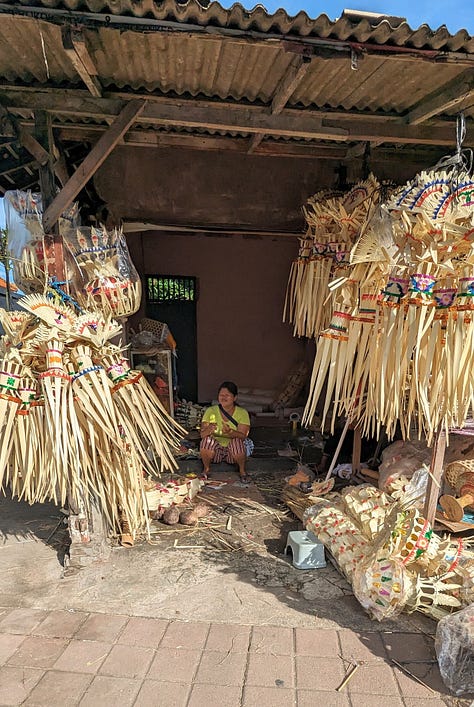
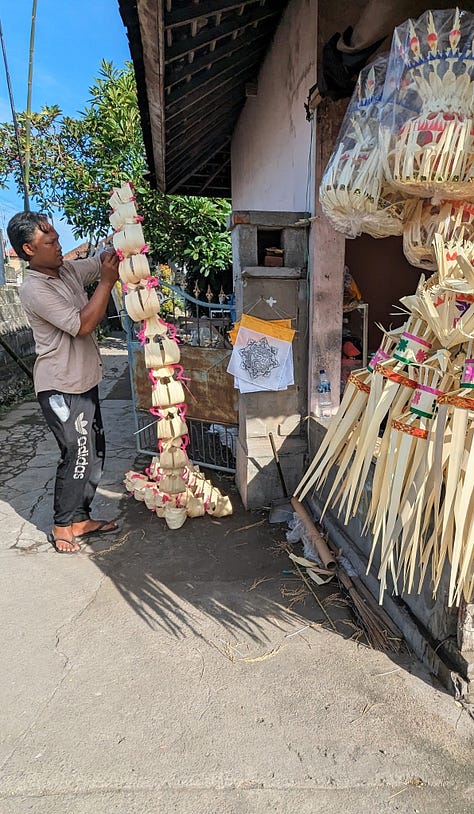
Several days ago I woke up to an interesting project along my road, very close to my house. The locals were getting ready for the upcoming major ceremonies and in preparation slaughtered two pigs. Each Balinese family lives in a Banjar or neighborhood association and contributes money to a pool. Then a certain number of pigs get sacrificed and shared among the neighbors. This makes it far easier and more practical as pigs are expensive and are too much of a burden for a single family.
Galungan marks the beginning of three important recurring religious ceremonies — Galunga, Kuningan and Nyepi. The spirits of deceased relatives who have died and been cremated return to visit their homelands, and the current inhabitants have a responsibility to be hospitable through prayers and offerings. The most obvious sign of the celebrations are the penjor - bamboo poles with offerings suspended at the end. These are installed by the side of roads.
Galungan Preparations:
3 days before -- Penyekeban -- Cooking of bananas for offerings
2 days before -- Penyajaan -- Making of jaja (fried rice cakes)
1 day before -- Penampahan -- Slaughtering of pigs or chicken for feasts
1 day after -- Manis Galungan -- Visiting family
10 days after -- Kuningan -- Prayers, offerings - spirits return to heaven
11 days after -- Manis Kuningan -- Fun
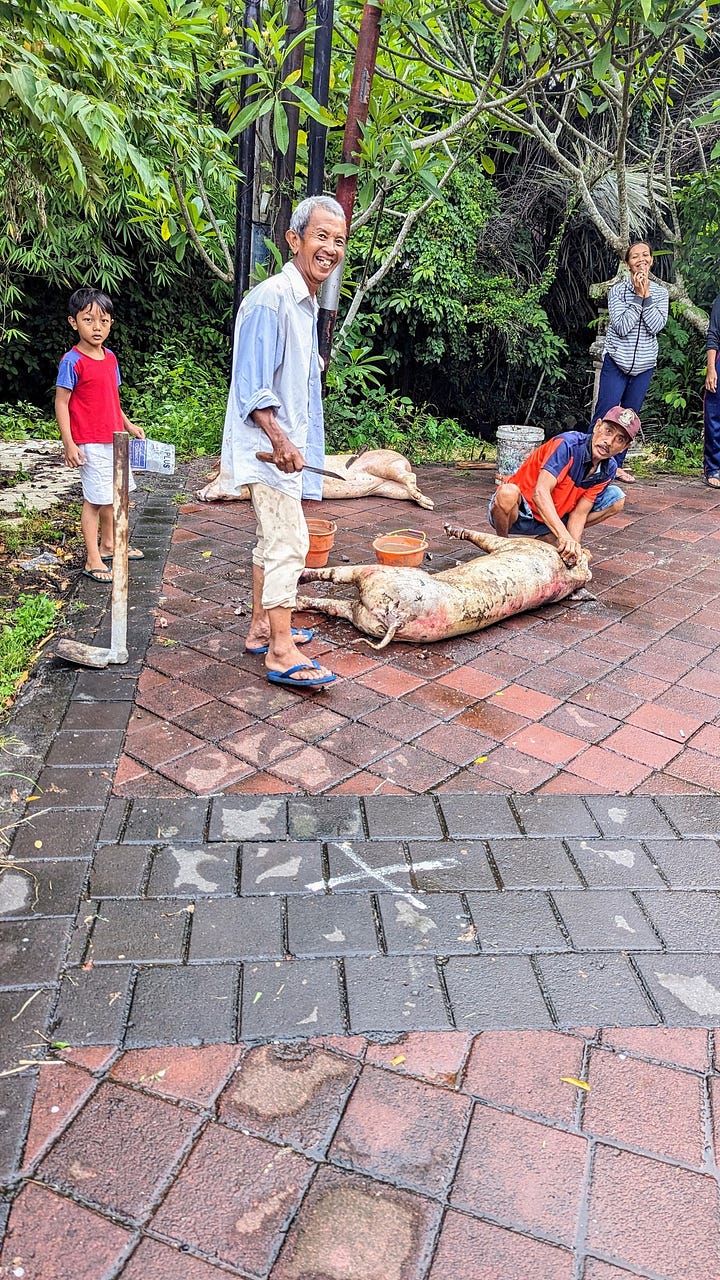
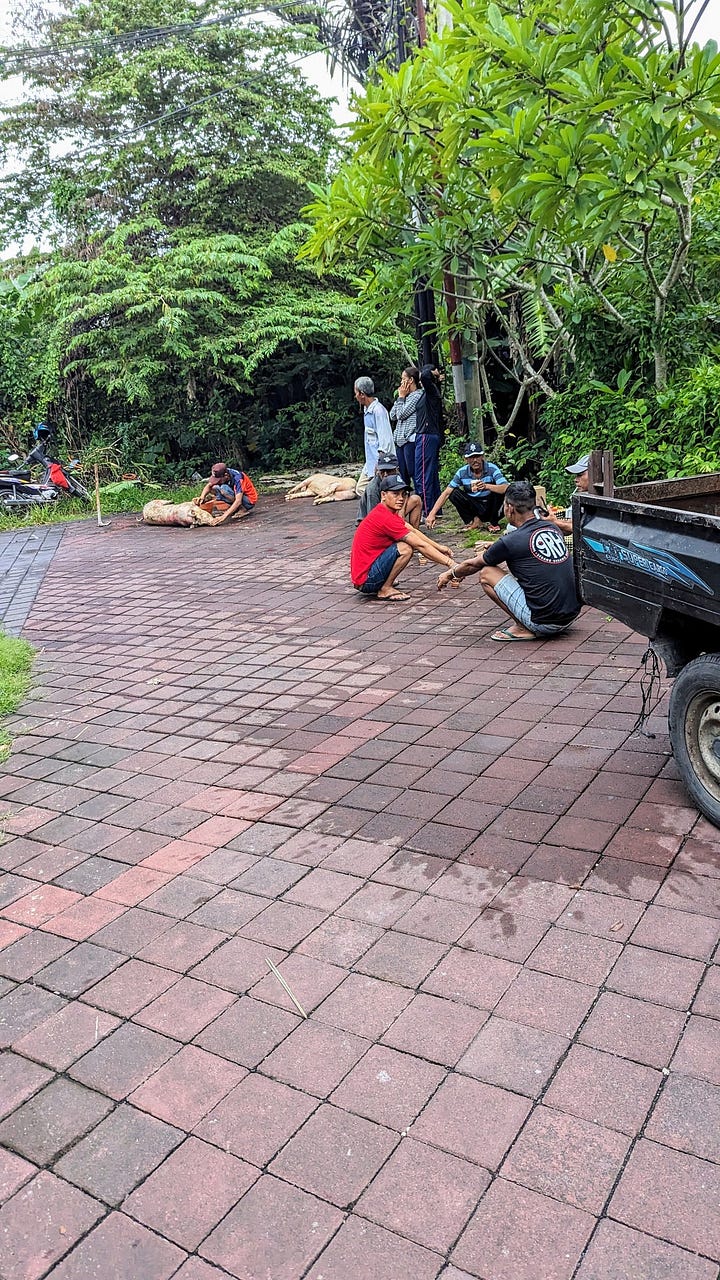
This little boy created an Ogoh-ogoh statue, to the best of his ability. In 20 years (if he continues to practice) he'll have enough skills to create parade quality statues like the orange fish elephant god on the right.
These statues of the evil spirits that must be banished from Bali on their New Year’s Eve (last night). Parades displaying these creatures are island-wide and it’s a night of music and dance and intentionally being loud, so that the spirits are fully invoked. The next day is Nyepi and everyone must stay in their homes and hide from the evil spirits, who swoop down from the heavens and visit the island. Everything is 100% shut-down, from the airport to the banks to every single shop on the island. You will actually be reprimanded if you are seen outside your home.
The evil Gods are so bored that they leave the island for an entire year, only to return again at the next Nyepi. In the meantime Balinese harmony returns.
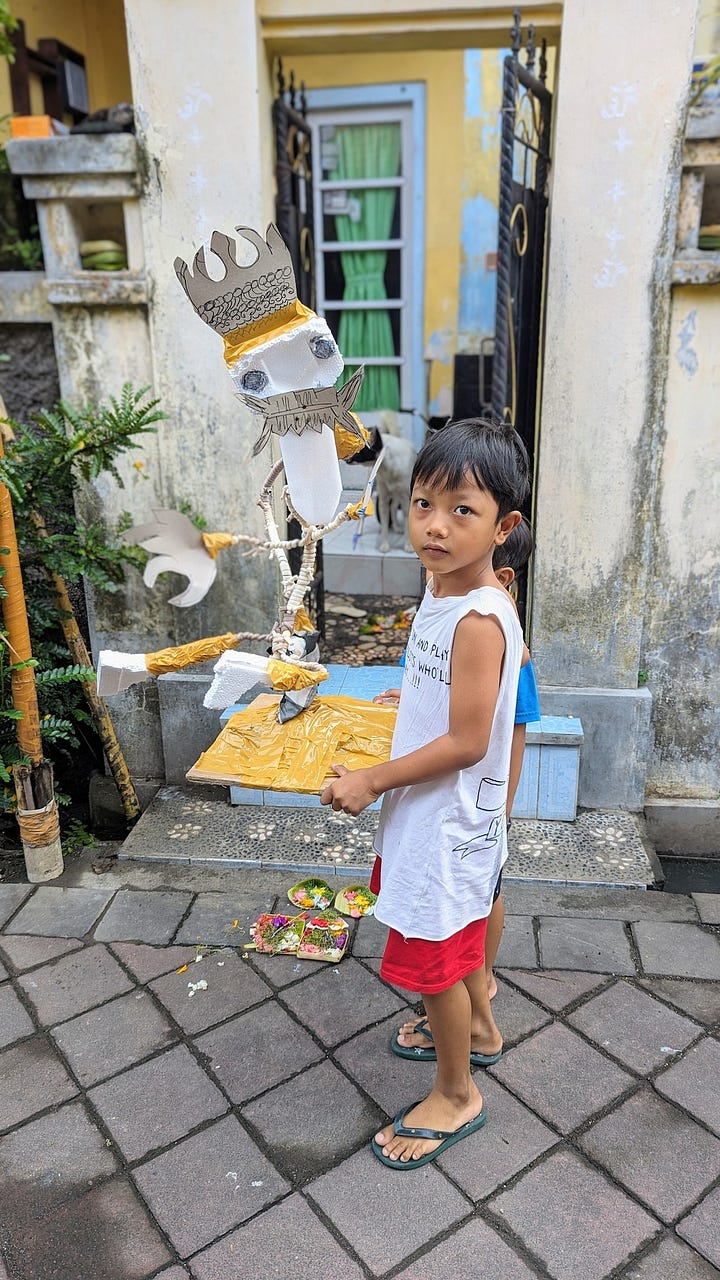
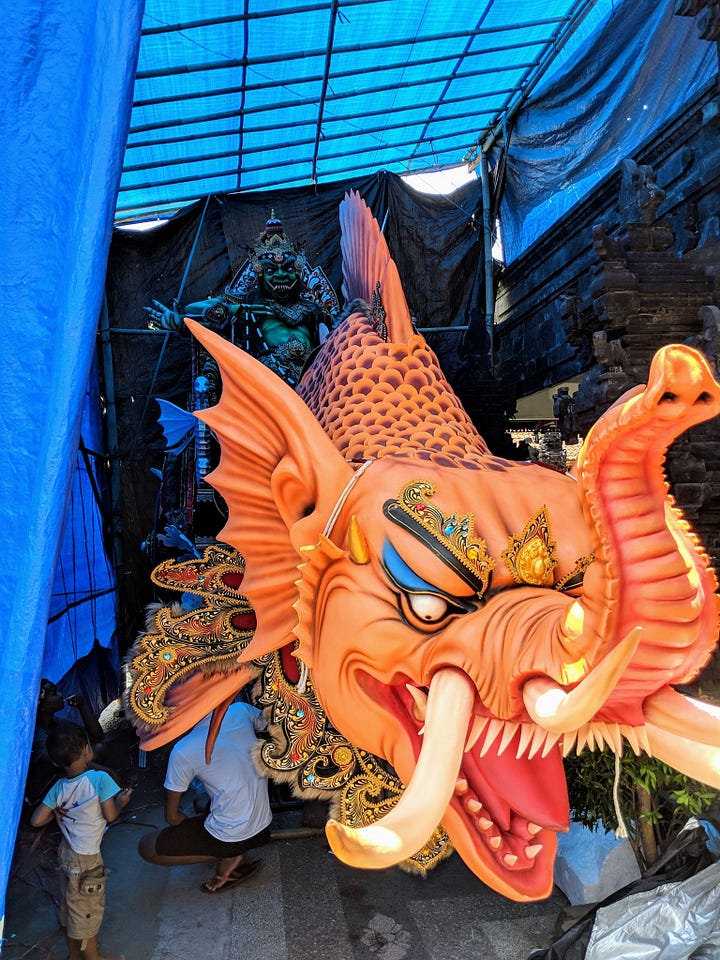
Later,
Neill



